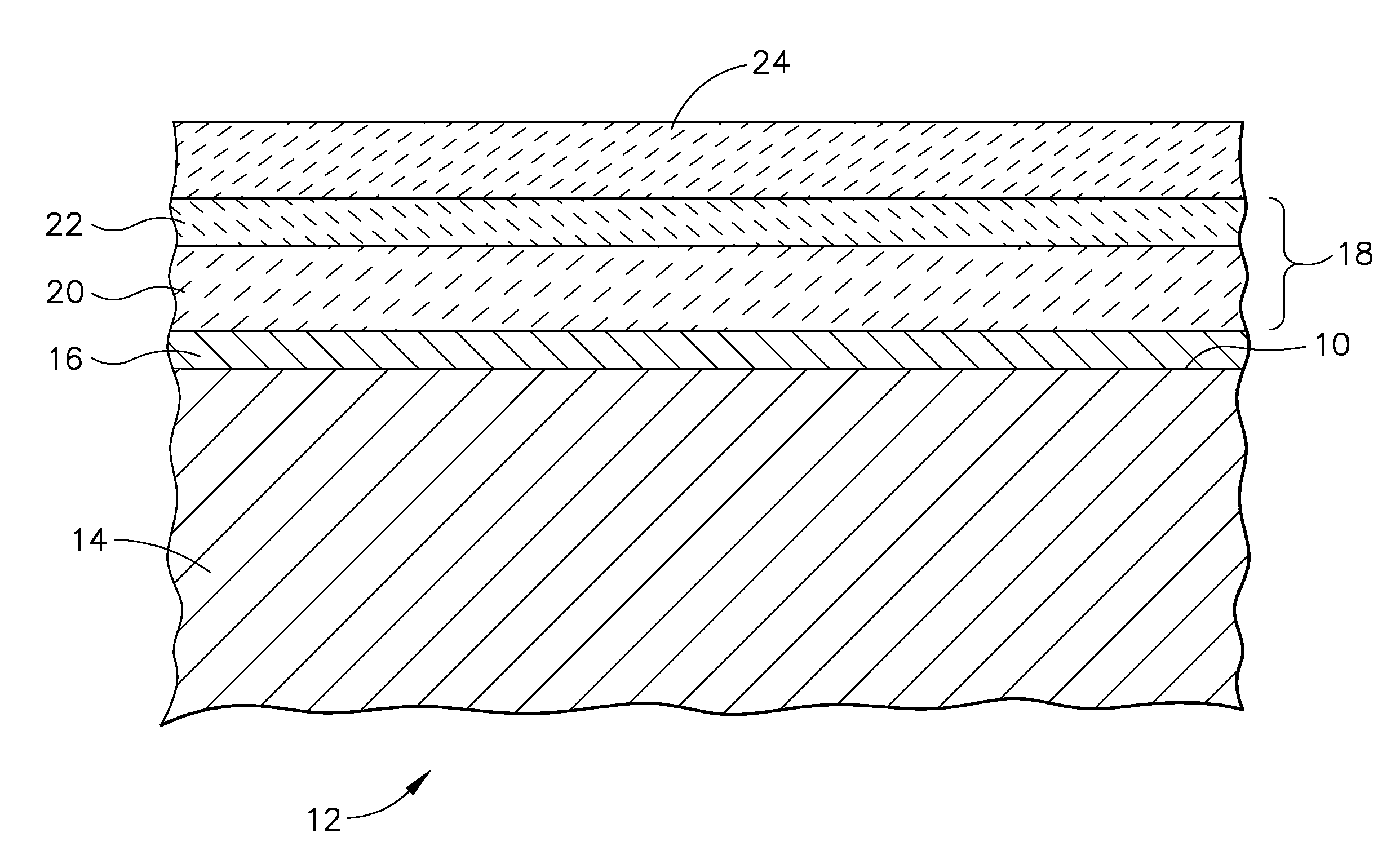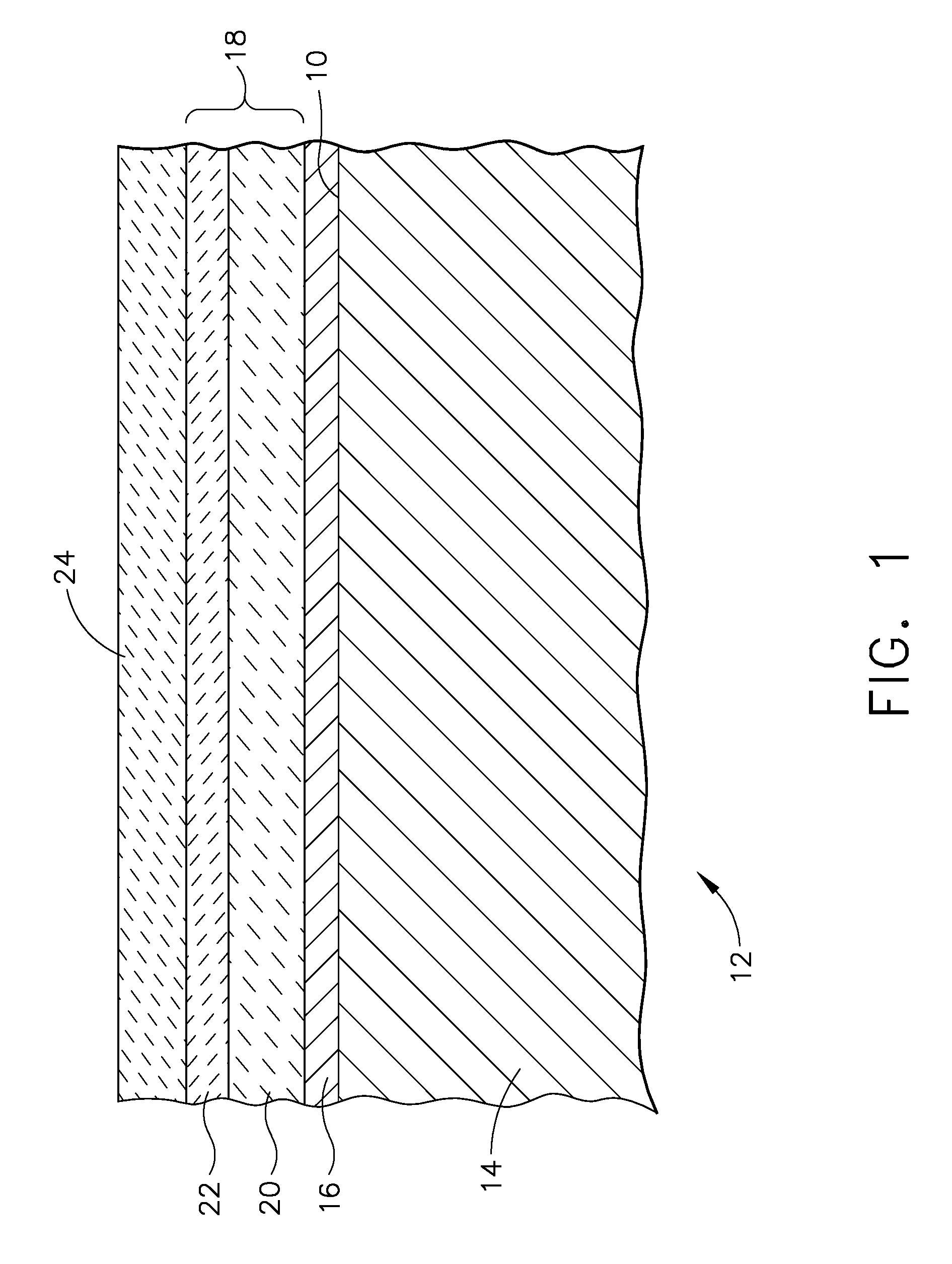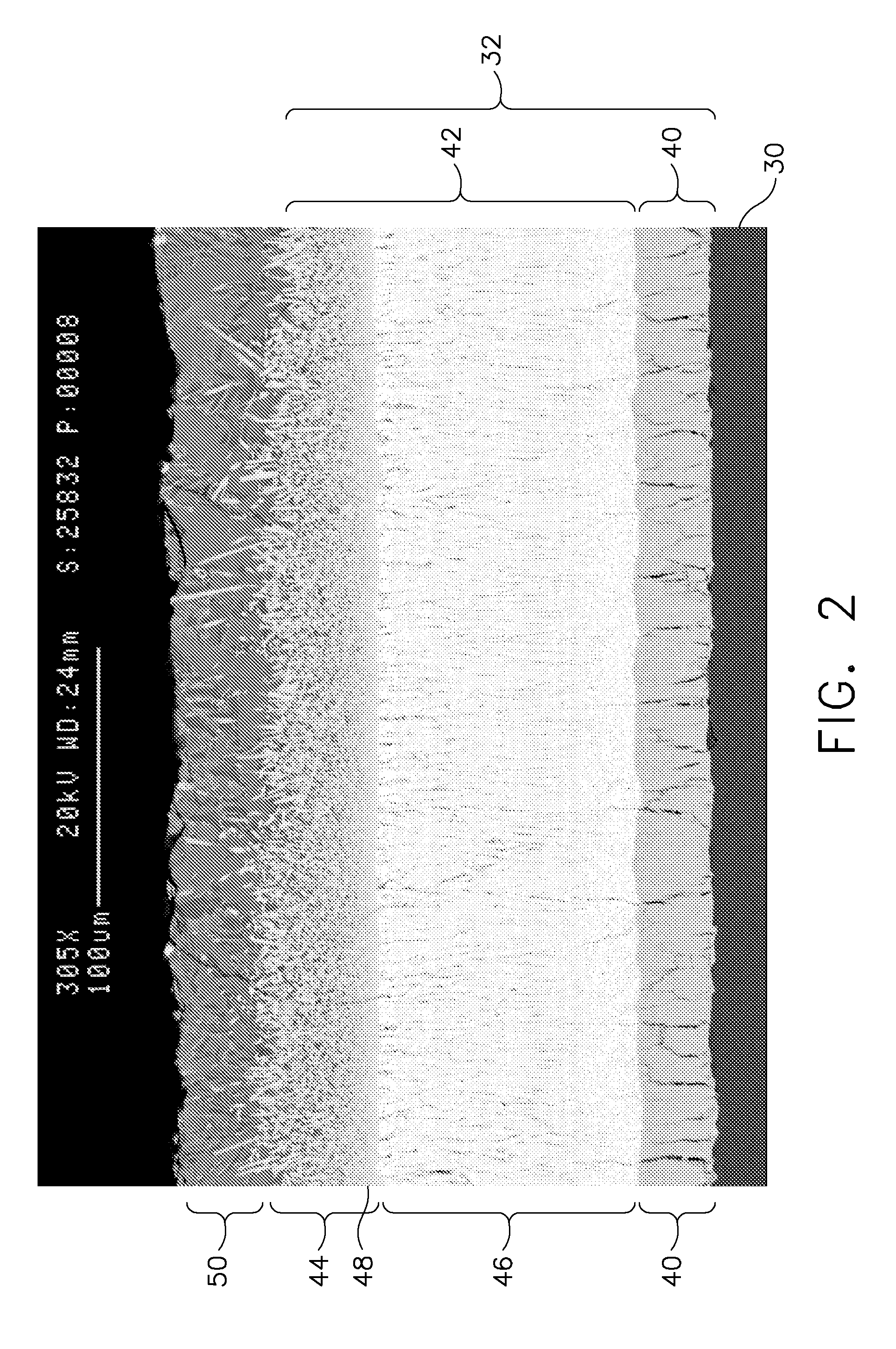Layered thermal barrier coatings containing lanthanide series oxides for improved resistance to CMAS degradation
a technology of lanthanide series and thermal barrier coating, which is applied in the direction of superimposed coating process, machine/engine, natural mineral layered products, etc., can solve the problems of insufficient interaction between small amounts of lanthanide series based oxides and the formation of advanced turbine engines, and achieve the elimination of an expensive and complex inner layer, improved erosion resistance, and preventing cmas damage
- Summary
- Abstract
- Description
- Claims
- Application Information
AI Technical Summary
Benefits of technology
Problems solved by technology
Method used
Image
Examples
Embodiment Construction
[0028]The present invention is a multi-layer thermal barrier coating system that is resistant to CMAS infiltration for application to a substrate of hot section components of gas turbine engines that are exposed to environmental contaminants resulting in CMAS deposits during normal gas turbine operation. Referring now to FIG. 1, the thermal barrier coating system typically is applied over the substrate surface 10 of a component 12. The substrate 14 typically is a superalloy material, which is coated with a bond coat 16. A zirconium-based coating 18 overlies the bond coat to provide the requisite CMAS infiltration resistance. It will be understood by those skilled in the art that coating 18 of the present invention may include hafnium, partially or completely substituted for zirconium, and is used herein in that context. The zirconium-based coating 18 includes two layers, an inner layer 20 of partially stabilized zirconium oxide and an outer layer 22 overlying the inner layer 20 comp...
PUM
| Property | Measurement | Unit |
|---|---|---|
| Percent by mass | aaaaa | aaaaa |
| Percent by mass | aaaaa | aaaaa |
| Thickness | aaaaa | aaaaa |
Abstract
Description
Claims
Application Information
 Login to View More
Login to View More - R&D
- Intellectual Property
- Life Sciences
- Materials
- Tech Scout
- Unparalleled Data Quality
- Higher Quality Content
- 60% Fewer Hallucinations
Browse by: Latest US Patents, China's latest patents, Technical Efficacy Thesaurus, Application Domain, Technology Topic, Popular Technical Reports.
© 2025 PatSnap. All rights reserved.Legal|Privacy policy|Modern Slavery Act Transparency Statement|Sitemap|About US| Contact US: help@patsnap.com



